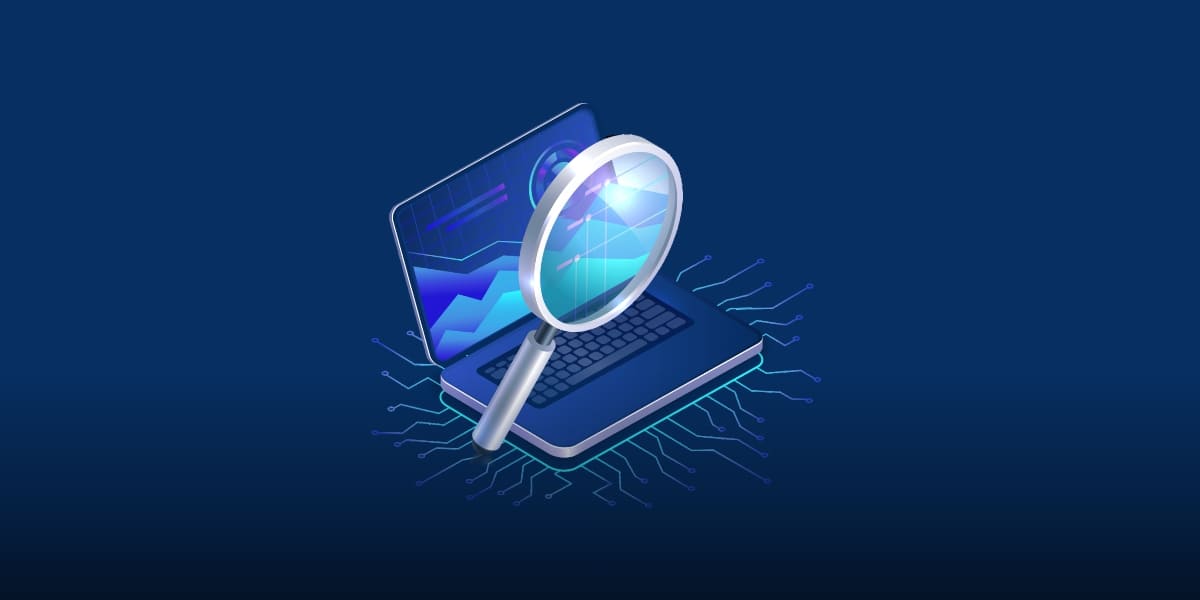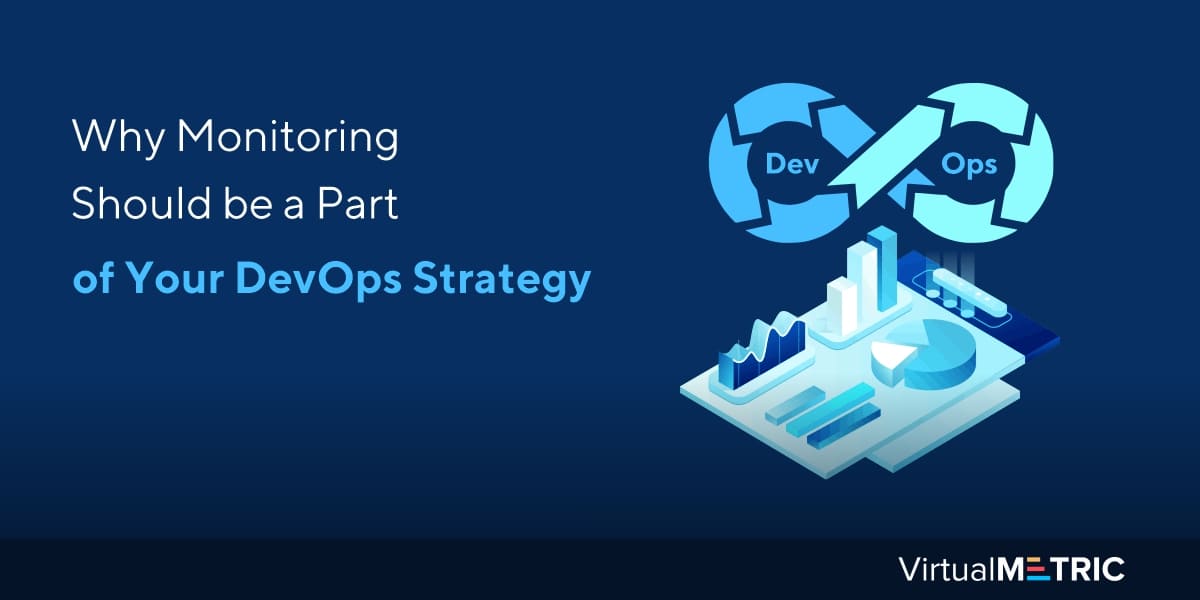DevOps came about as a result of ever-growing lags between development and operation. It’s a framework that deals with communication bottlenecks, allowing for smooth change management. DevOps monitoring is a crucial element and a necessity for this framework to succeed. Monitoring plays a vital role in realizing the underlying goals of DevOps.
DevOps is all about eliminating technical inefficiencies and improving the speed of the whole cycle from development to deployment. In organizations big or small (especially big ones), the current SDLC creates a culture of the blame game. The problems are tossed from one team to another, without the problem being resolved in time.
Now, when we talk about resolving problems, we first have to talk about detecting problems. And infrastructure monitoring is at the heart of detecting issues and inefficiencies, helping improve the overall change rollout and resolving problems before they get serious. Isn’t that what DevOps is about anyway?
Proactive Approach
Your DevOps strategy should focus on being proactive. Part of that proactive approach is monitoring. Constantly monitoring the product from the development stage to the operational stage will give the team valuable information about the bugs, as to where exactly they are occurring. Also, as the development team is in close contact with the operations team, they are also part of the monitoring process.

If you’re trying to deploy a solution faster with fewer issues, you have to be proactive with potential issues. In the current agile environment, development teams are really only concerned with development. As long as it runs fine on their machine, it’s good to go to the QA team and on to deployment. The DevOps operations bring developers into the fold of deployment as well, pushing them to be actively involved in the monitoring process.
Your DevOps strategy should focus on being proactive. Part of that proactive approach is monitoring. Constantly monitoring the product from the development stage to the operational stage will give the team valuable information about… Click To TweetWith monitoring, all teams are aware of the performance metrics, and they understand where the problems are occurring. It basically helps reduce the time it takes for teams to detect and resolve the problem. There’s not much back and forth as everyone is present in the room openly looking at data that does not lie or draw a rosy picture; it tells the reality as is.
Early Warnings
Infrastructure monitoring tools that give early warnings about potential failures are crucial for understanding the health of the organization’s digital assets. These early warnings are a major part of the DevOps framework, not just because they reduce the time-to-market, but they also push for a self-reflection, if you will.
 These warnings aren’t just related to functional issues of the product but also management issues within the pipeline. Teams can use the information from monitoring to improve their own practices. That initiates a whole culture of optimization in processes within the subsets of teams, all of which are actively collaborating.
These warnings aren’t just related to functional issues of the product but also management issues within the pipeline. Teams can use the information from monitoring to improve their own practices. That initiates a whole culture of optimization in processes within the subsets of teams, all of which are actively collaborating.
Smaller Batches
Another great advantage of incorporating and prioritizing monitoring in the DevOps strategy is that it tends to reduce batch sizes. We go back to earlier detection, as the earlier you detect the problem, the smaller it is. As opposed to dealing with bigger batches, both developers and QA teams have smaller issues to fix, which obviously requires less time.
DevOps monitoring tools also promote better automated testing. Traditionally, when the problems are occurring ever so often, QA teams are pushed to resort to manual testing. This takes considerable time, slowing down the release. In the DevOps environment, problems are being detected and resolved proactively, which allows for quick automated testing.
Clarity in Feedback
A secret to realizing streamlined production and deployment is to utilize information radiators that provide detailed information to all those involved. Business units are typically lurking in the dark, unaware of the finer details. This is a problem that many organizations fail to realize. The more information individual teams and their members have, the better they can perform and communicate.
 The connected nature of the DevOps team requires constant communication. However, communication can only be effective if it’s clear and detailed. IT infrastructure monitoring provides both the big picture and granular details for teams to assess what the problems are and who can best deal with them.
The connected nature of the DevOps team requires constant communication. However, communication can only be effective if it’s clear and detailed. IT infrastructure monitoring provides both the big picture and granular details for teams to assess what the problems are and who can best deal with them.
It creates a culture of honesty, driven simply by the data that doesn’t lie. The team members can start to own up to their screw-ups and actively contribute to coming up with the solution. And those mistakes are then not repeated. In simpler ones, team members readily take responsibility, and instead of wasting time pointing fingers, spend time actively working to improve.
Better Version Control
With DevOps monitoring tools spilling the beans even about developmental issues, it makes it easy to employ version controlling. If there’s a fundamental error in production after a change, you can simply redeploy the last best solution. This resolves a big issue for organizations that spend big dollars on reducing the mean time between failures.
So basically you can use version control for virtually all production artifacts. Monitoring in DevOps not only helps detect problems early on but also helps use easier solutions to improve overall uptime. Again, the detailed picture of what the problem is and who can resolve it also helps teams use the best temporary solutions. It’s the classic two birds with one stone situation which makes this contemporary tech framework so sophisticated.
 Conclusion
Conclusion
When talking about monitoring in DevOps, the main takeaways are:
- It helps detect and fix issues early
- It improves adaptability and flexibility
- Data-driven improvements promote the overall health of the system
- Teams communicate much better and with clarity
- Productivity increase and delays decrease
In order to make monitoring a central pillar of their DevOps strategy, organizations have to use reliable monitoring tools for their infrastructure solutions. VirtualMetric’s monitoring tools are dedicated solutions for different parts of the infrastructure. They can be used by DevOps teams to successfully evaluate performance and gauge the security of their systems, helping detect problems early on.
The quick nature of DevOps can leave loopholes, especially around testing and rapid processing. VirtualMetric’s features cater to software testing, security analysts, quality assurance, and network teams within the enterprise. With the help of monitoring, these different teams can communicate effectively and seamlessly to mitigate risks and reduce vulnerabilities, making the best of DevOps.


Leave a Reply